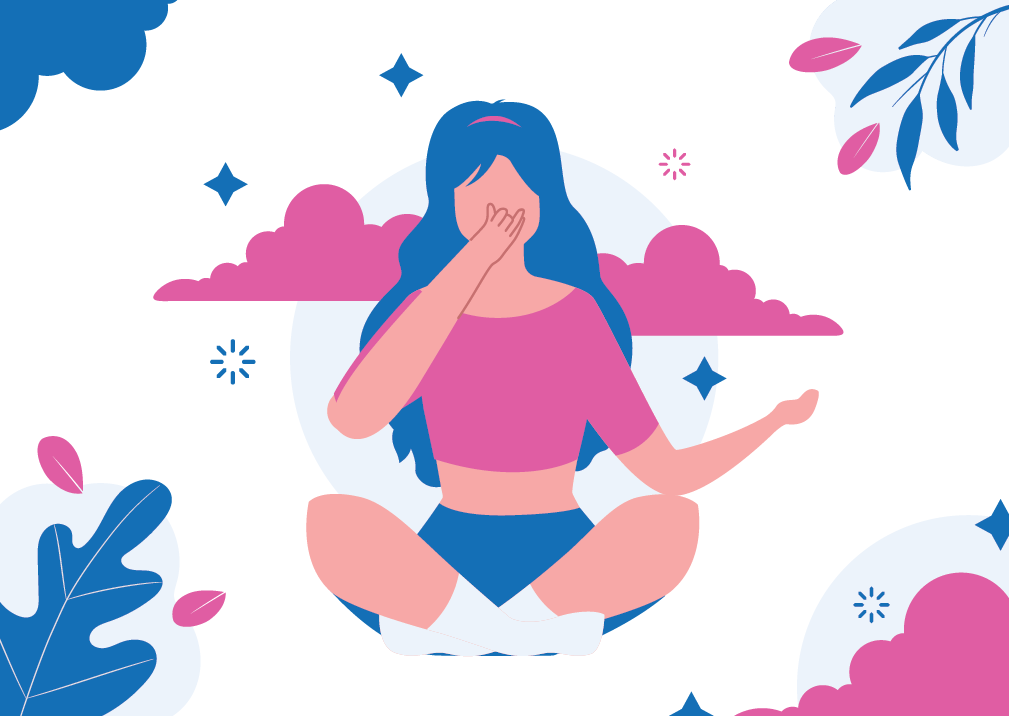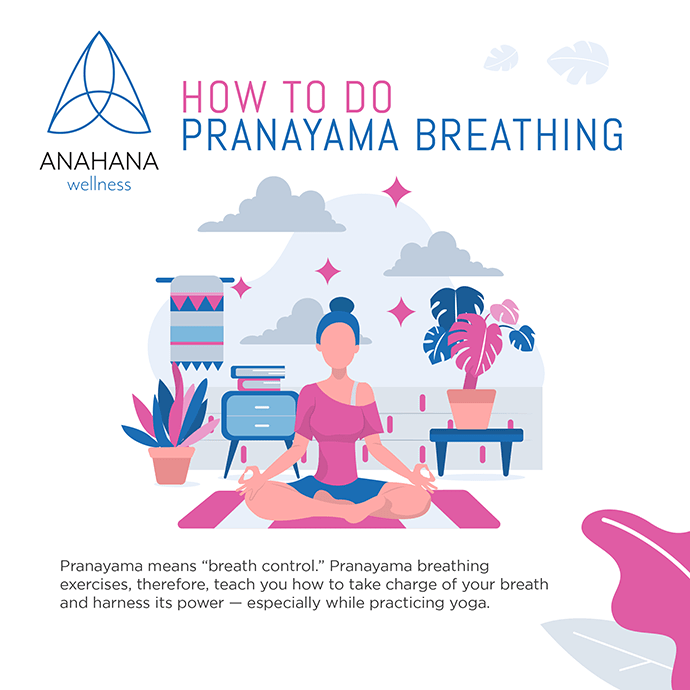Wim Hof Breathing Method
The Wim Hof Method is a three-step process developed by the legendary Iceman. Wim Hof has set numerous World Records about his ability to withstand...
In the ancient Hindu language of Sanskrit, prana means energy or life force (breathing), while ayama means control or regulation. Thus, prana and ayama (pranayama) create breath control.
 People have been practicing pranayama breathing techniques as yoga breathing exercises for thousands of years, as mentioned in the Atharva Veda, an Ancient Indian religious text from 1000-900 BCE.
People have been practicing pranayama breathing techniques as yoga breathing exercises for thousands of years, as mentioned in the Atharva Veda, an Ancient Indian religious text from 1000-900 BCE.
Over the last three millennia, practitioners of these breathing techniques have been reaping the myriad of benefits. Today, yoga classes tend to include pranayama (yogic breathing) as a part of the practice, but it can be performed independently.
The pranayama breathing technique and deep breathing yoga target the one key element of the human body that is both automatic and controllable: breathing.
When people harness the power of our breath through yoga breathing, they establish the body and mind connection. Doing this can radically change the way of thinking, feeling, and, therefore, acting.
The goal of pranayama, or prana breathing, is to attain and maintain steady breathing patterns during asana practice, the sanskrit word for yoga poses. Each inhale should be deep and slow. When you breathe this way, it activates the vagus nerve. The vagus nerve runs from your brain to your abdomen. It is in charge of activating the relaxation response and switching off our reflex for fight or flight, which often comes with stress.
In short, calming the body calms the mind. And achieving this begins with deep breathing exercises.
 Yoga significantly focuses on breathing. Many yoga instructors make breathing the focal point of their teaching style since yoga can’t be performed without significant attention to breathing patterns which can be developed and formed by applying pranayama techniques during a Hatha or a Vinyasa class.
Yoga significantly focuses on breathing. Many yoga instructors make breathing the focal point of their teaching style since yoga can’t be performed without significant attention to breathing patterns which can be developed and formed by applying pranayama techniques during a Hatha or a Vinyasa class.
Pranayama benefits run the gamut from better sleep and less muscle tension to a clearer and focused mind. Here are some of the specific benefits you can expect from pranayama breathwork:
No! Pranayama techniques are simple to learn.
While some types of pranayama breathing may take longer and be more advanced, beginners can start with a simple pranayama technique to add to their daily routine.
There are several different variants of this deep breathing technique, such as:
Pranayama breathing or pranayama yoga beginners should consider the two latter exercises with excellent introductory deep breathing techniques.
The goal of Dirga is to imagine inflating the belly like a balloon. It expands outward during inhalation and retracts back toward the spine during exhalation.
First, to practice Dirga, get comfortable, either seated in a chair or on a yoga mat. Sit straight and tall. Begin breathing with a few normal breaths and observing inhales and exhales.
On the next inhale, focus on breathing slowly, allowing the belly to expand outward and inflate like a balloon. Taking a bit more air, fill and expand the rib cage. Finally, let the air go up through the chest and collar bones.
Now began a slow exhale. Release air from the chest and collar bones first. Follow this by slowly releasing the air from within the rib cage and belly. The belly should retract and move inward toward the spine until complete exhalation. Repeat three times.
The power breathing of Simhasana (Lion’s Breath) can help release inhibitions. A unique pose is associated with Simhasana; however, the focus is on breathing.
Get into a comfortable position with good posture on the floor or in a chair. Start by inhaling through the nose. Exhale, open your mouth wide, and say the word “HA.”
Inhale again. On the next exhale, in addition to saying “HA,” stick out the tongue, pointing the tip downwards toward the chin.
Inhale again. Finally, breathe a heavy exhale again, and as you say “HA” and stick out your tongue, gaze upward toward the ceiling. Do all three of these things on the exhale for three more breath cycles.
Pranayama means breath control. It is the practice of regulating breathing and harnessing its power, particularly during yoga practice. Of course, in general, pranayama and yoga breathing techniques can also be performed independently.
Pranayama breathing exercises work in the body by slowing down respiration. During pranayama practice, the breath deepens and slows down instead of simply allowing it to run on autopilot.
 Both meditation and pranayama are practices that decrease stress, encourage calm, and improve concentration. However, the two techniques differ slightly.
Both meditation and pranayama are practices that decrease stress, encourage calm, and improve concentration. However, the two techniques differ slightly.
Meditation is a practice meant to train the mind in awareness and attention. One of the core aims of meditation is to improve mental clarity and freedom from the perpetual influx of thoughts and emotions in mind by disconnecting from the ideas and practicing pure observance.
Pranayama, on the other hand, focuses on breathing. It is the practice of harnessing the breath to deliver calmness to the body and, in turn, to the mind as well.
Both can also be practiced during and alongside yoga, and it’s possible to set an intention before a pranayama practice, just as one would do before meditation.
It’s advised to speak to a doctor before beginning any new practice, especially for people with chronic medical conditions. Pranayama breathing techniques should be safe for most people, but there are some exceptions.
First, avoid practicing pranayama directly after eating. Wait at least four hours. Additionally, be sure that there is no overstraining while performing pranayama exercises.
Finally, always breathe through the nose (unless otherwise directed), and go slow. Do not hold your breath. Instead, keep a steady flow of air going in and out of the air passageway.
When you sit comfortably, maybe listening to some rhythmic sound, focusing on breath retention, and staying in the present moment helps to feel calm coming over the body and mind. This breathing practice will positively affect the parasympathetic nervous system.
Inhale slowly and then exhale at the same slow pace. With each inhale and exhale, the calmness will spread throughout the body. Stress and anxiety will naturally be alleviated by focusing on normal breathing using this yoga practice. This is the primary objective of pranayama practice. But it also improves sleep quality if this is another objective you are trying to achieve.
Thus together, prana and ayama (pranayama) can be defined as breath control.
For thousands of years, people have been practicing pranayama breathing techniques as yoga breathing exercises. In particular, it is mentioned in the Atharva Veda, an Ancient Indian religious text from c. 1000-900 BCE.
Over the last three millennia, practitioners of these breathing techniques have been reaping the myriad of benefits that they provide.
There are numerous pranayamas to choose from. Today, they are often used in yoga classes, but they can be performed on their own as well
https://www.yogajournal.com/practice/pranayama
https://www.sacred-texts.com/hin/av.htm
https://www.thecut.com/2019/05/i-now-suspect-the-vagus-nerve-is-the-key-to-well-being.html


The Wim Hof Method is a three-step process developed by the legendary Iceman. Wim Hof has set numerous World Records about his ability to withstand...

Even though we are all breathing constantly, most people do not practice diaphragmatic breathing, which is how to breathe properly. The benefits from...

Buteyko is a method of breathing that decreases the respiration rate, that is reducing the number of breaths taken each minute to slow the breathing...